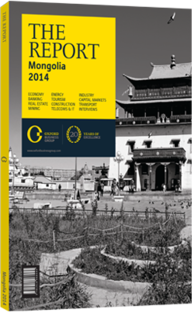Chinggis can: The country’s first sovereign bond was heavily oversubscribed
The government in Mongolia has revealed plans to support domestic export manufacturers, with the aim of reducing a burgeoning import bill and boosting the country’s economic foundations. Prime Minister N. Altankhuyag said at a press conference in January 2014 that the government would allocate $216m from the $1.5bn raised by the sale of “Chinggis bonds” to provide loans to local businesses in the primary export industries of minerals and cashmere.
Mongolia’s first sovereign bond, which was strongly oversubscribed, was dubbed Chinggis by the local media after the country’s founding father, Chinggis Khan. Since the offering in November 2012, the funds raised have financed infrastructure growth, helping to reduce the economic impact of falling coal exports in 2013. The state-run Development Bank of Mongolia (DBM) will allocate funds to successful candidates, while setting terms and conditions with borrowers.
Imports
A hefty import bill climbed to $6bn in 2013, with the country importing 88% of its consumer goods. According to the local media, the nation imports 74% of its dairy products – despite having 45m head of livestock – 41% of flour-based products, and 62% of its textiles and clothing. Minerals, machinery and electrical appliances also feature on the list. The plan to boost export industries squares with the “Let’s Construct and Create in Mongolia” programme, announced by Altankhuyag in January 2014. The initiative is spearheading a national drive to increase the value of exports by MNT1trn ($600m) in 2014, with “support for manufacturing replacing support for imports”. In December 2013 the National Statistical Office revealed that exports fell by 4.2% in the first 11 months of 2013.
Infrastructure
A drop in mining revenues caused by reduced demand from China weighed on Mongolia during 2013. However, investment in infrastructure helped to drive growth in other areas of the economy.
Annual GDP growth accelerated to 14.3% in the second quarter, buoyed by infrastructure spending, particularly the construction of new roads linking six of Mongolia’s provinces. The Chinggis bond has helped finance more than 200 projects, including roads and railways, air transport, energy and housing, across various sectors. Some MNT256bn ($154m) was used to construct 700 km of paved roads, while MNT838bn ($503m) went on financing a wave of new railways, the Tavan Tolgoi power initiative and a metallurgy plant.
Deficit Concerns
However, critics have questioned the use of the proceeds from the Chinggis bond sale and say they have been used to finance off-budget programmes in an effort to avoid the fiscal stability law (FSL), which limits the size of the budget deficit.
When it was introduced in 2010, the FSL placed a cap on outstanding debt and the fiscal deficit, with the limit set as a percentage of GDP. In November 2013 parliament rejected a proposal to amend the FSL and increase the government’s borrowing capacity to 60% of GDP for 2014. The cap was set at 50% for 2013 and is due to come down further to 40% in 2014.
Questions have also surrounded a $290m, 10-year bond that the DBM issued in late 2013 to finance infrastructure projects. Thanks to a 90% guarantee by the Japan Bank of International Cooperation, borrowing costs were low, with the note’s coupon set at 1.52%. In December 2013, the Financial Times pointed out that the so-called Samurai bond would likely run up against the country’s borrowing limit. The same month, ratings agency Fitch noted the government’s budget deficit had reached 12% of GDP in 2013, rendering the FSL “ineffective as a constraint on policymaking”.
At the same time, the ratings agency revised the country’s outlook from stable to negative, and both the World Bank and the IMF have cautioned the government in recent months that its expansionary fiscal and monetary policies could threaten the stability of the economy. This suggests that, while international investors have so far been willing to lend to Mongolia at relatively inexpensive terms, going forward they may seek additional reassurance that spending levels are not putting the country’s immediate outlook at risk.
You have reached the limit of premium articles you can view for free.
Choose from the options below to purchase print or digital editions of our Reports. You can also purchase a website subscription giving you unlimited access to all of our Reports online for 12 months.
If you have already purchased this Report or have a website subscription, please login to continue.

